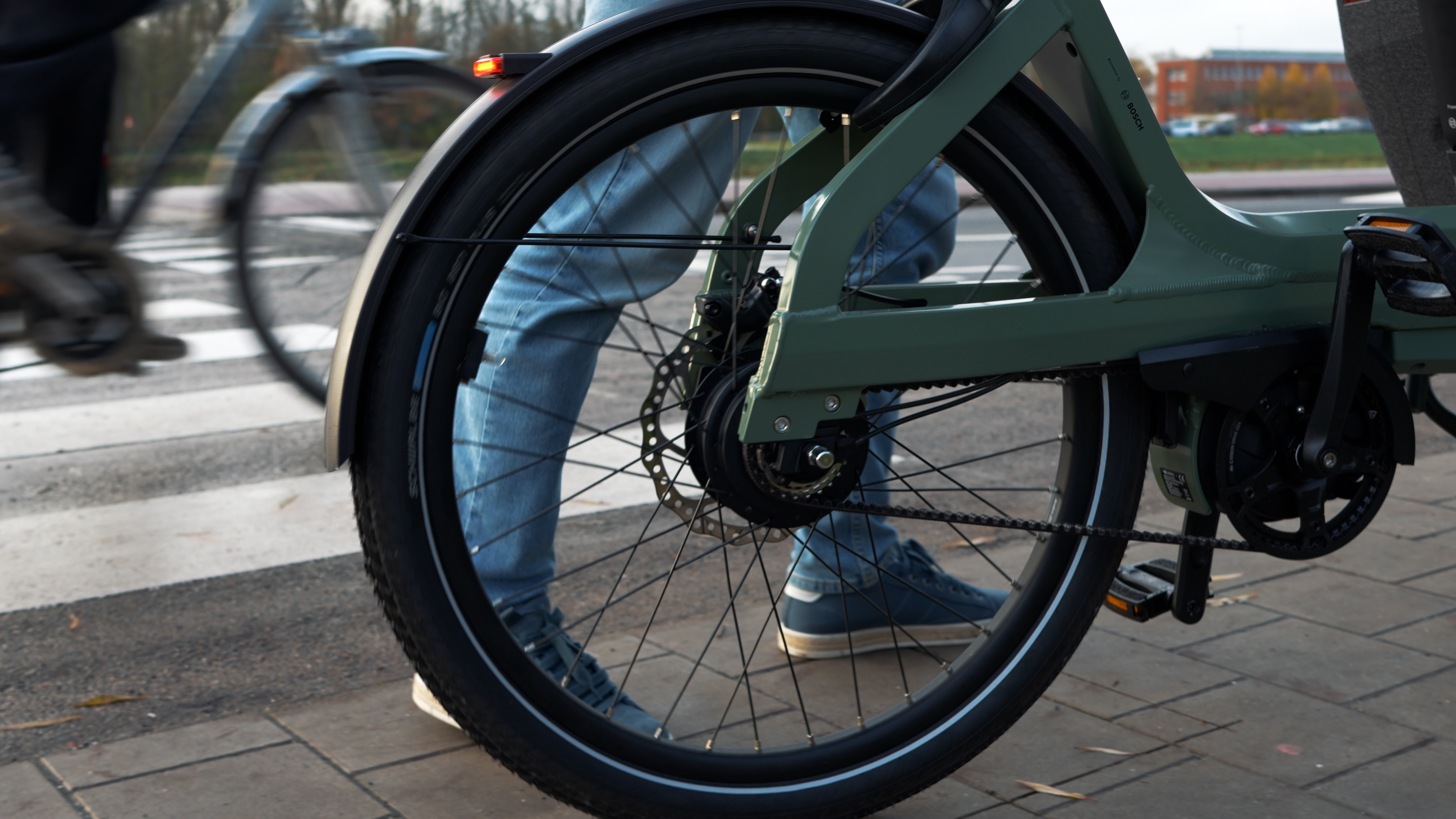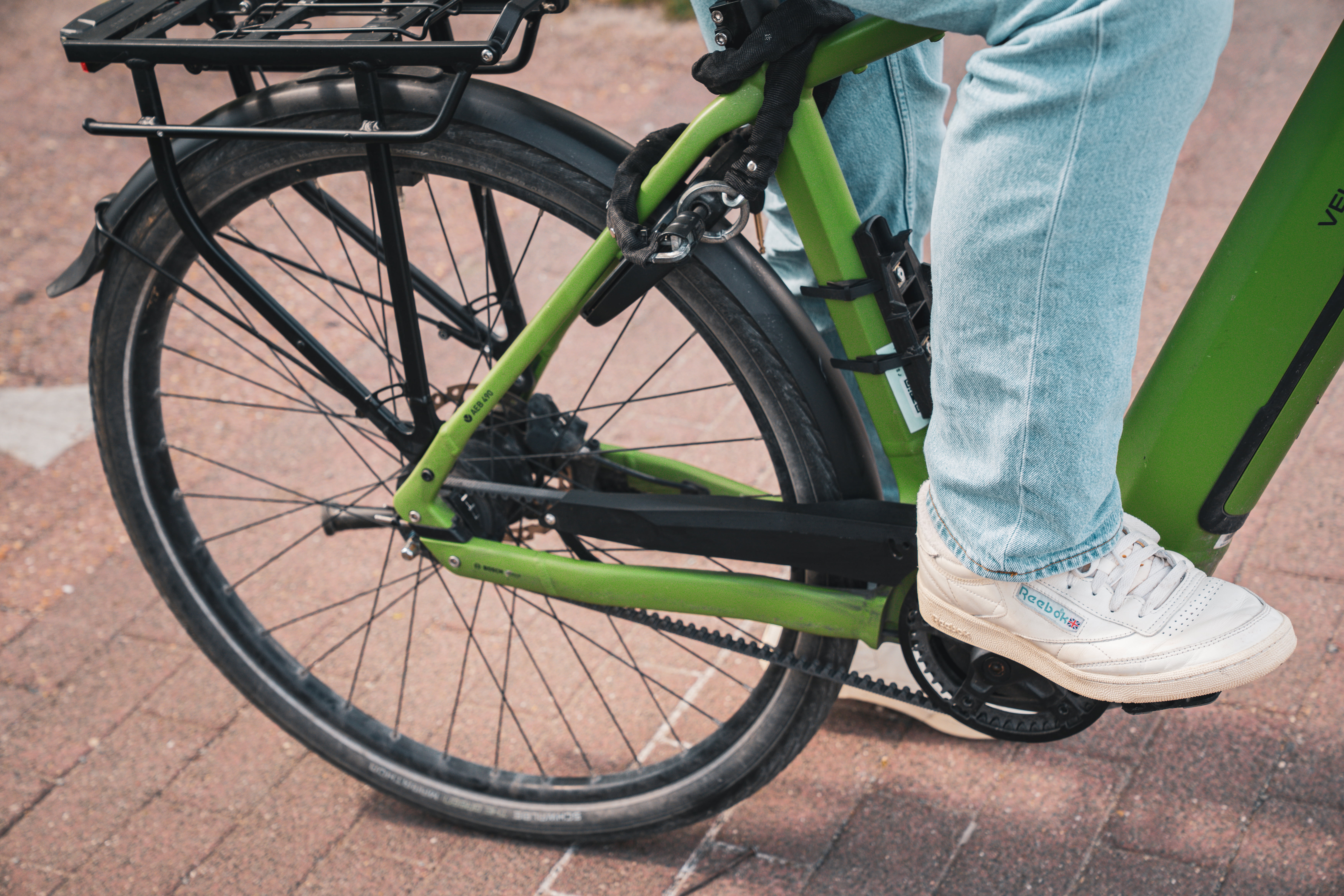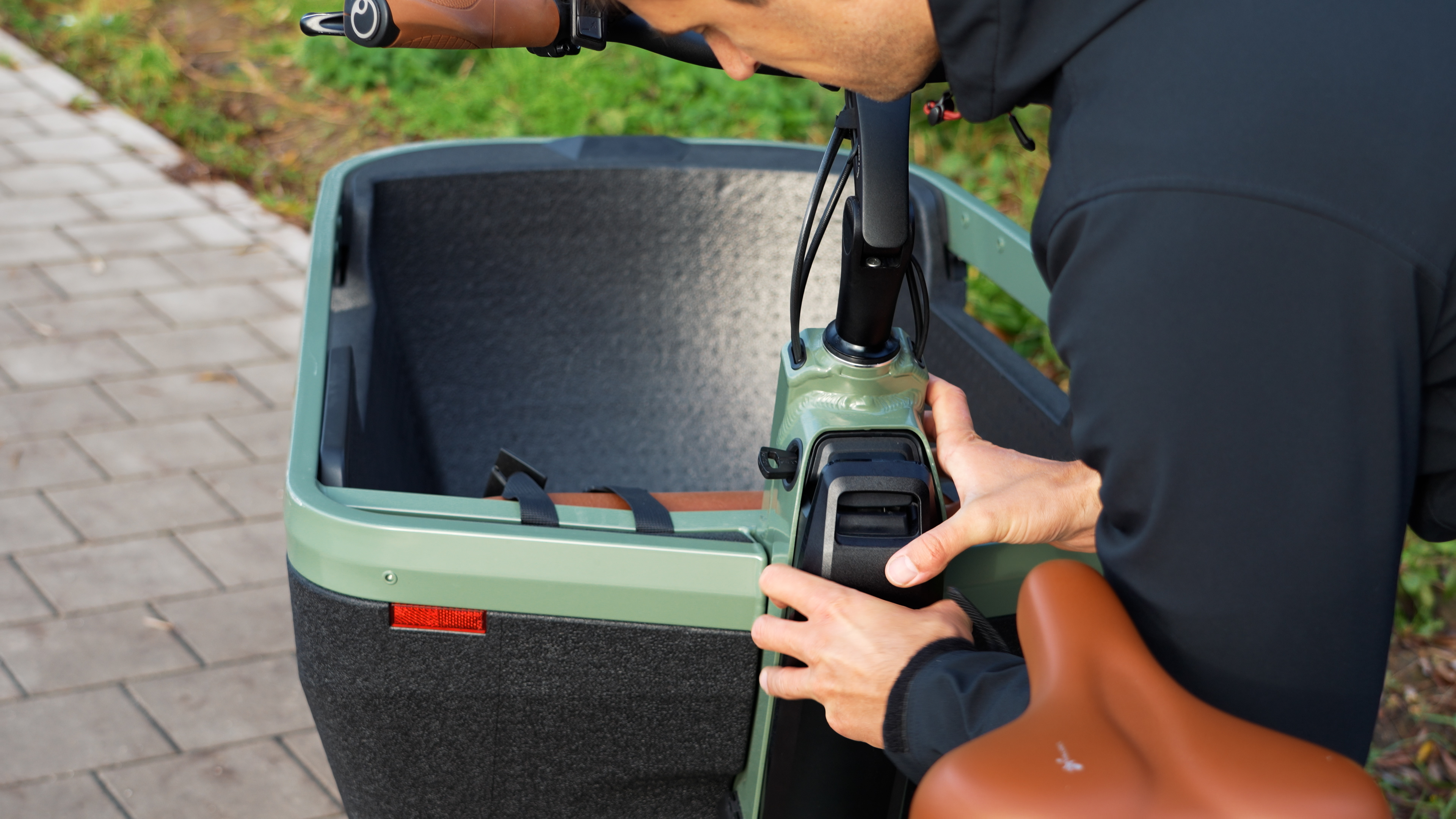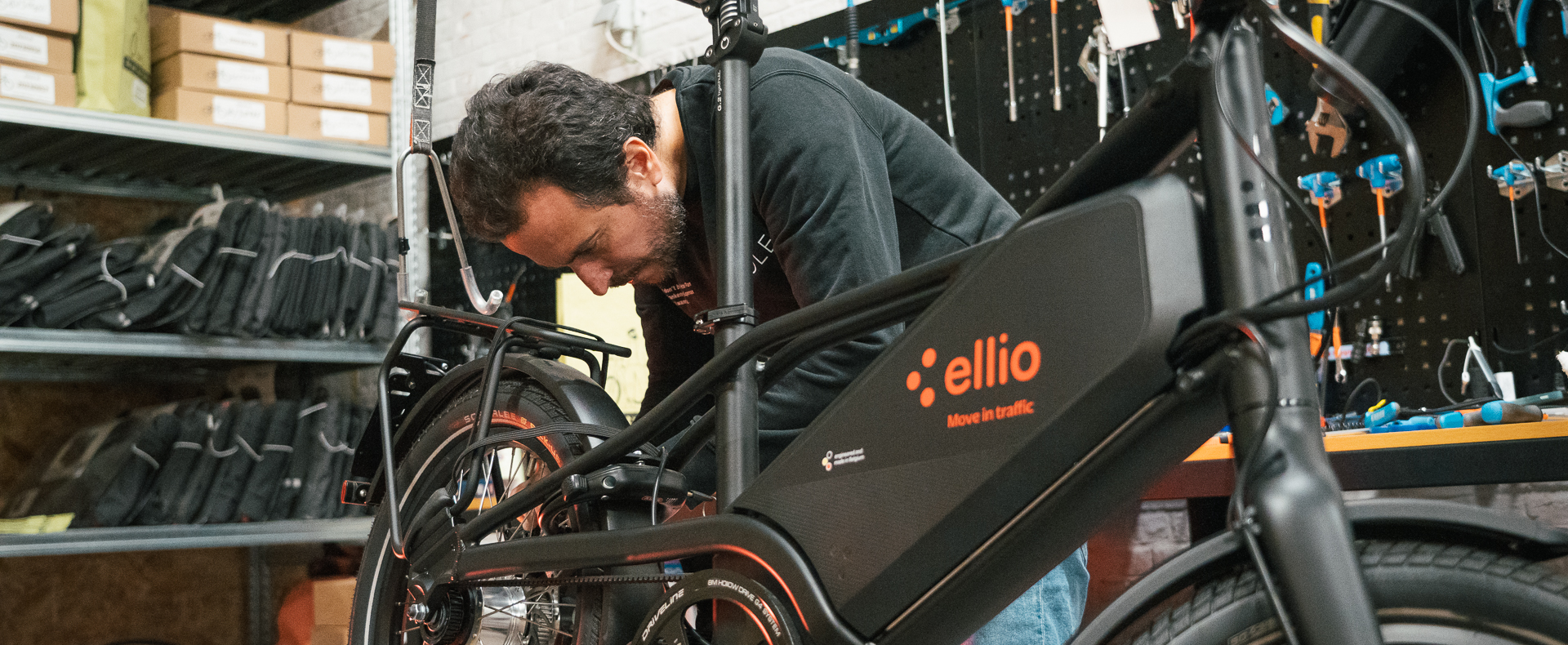Hats, scarves, and rain pants — seasoned cyclists know how to protect themselves, but what about your bike? Mud, salt, and grime sneak into every corner, and before you know it, you’re stuck with a stiff chain or squeaky brakes. The good news? It doesn’t have to get that far. With a few small habits, you can keep your bike smooth, clean, and reliable — even on the coldest days of the year.
Here’s how to keep your bike in top shape through winter and avoid that extra trip to the repair shop.
✅ Clean your bike in winter
A clean bike doesn’t just ride better — it lasts longer. Mud, salt, and sand are the biggest enemies of your bearings and drivetrain, so an occasional cleaning does wonders. Bearings are the small steel balls in your wheels, crank, or pedals that keep everything spinning smoothly. When dirt or water gets in, they can rust or seize up — and you’ll feel it immediately.
- Skip the pressure washer. It may seem convenient, but the strong water jet pushes dirt and moisture into your bearings, motor, or battery. Use a garden hose with a soft spray, a brush, and some car shampoo instead.
- Clean your brake discs carefully. Apply a little brake cleaner to a cloth and gently wipe over and between the disc. Never spray directly on the brakes — it reduces braking power.
- Don’t forget the chain. Wipe it with a dry cloth first, and use a small brush or flat screwdriver to remove dirt between the gears.
✅ Tire pressure and grip: small adjustment, big difference
Cold air lowers tire pressure — something many riders forget. The right pressure, however, makes all the difference for grip, comfort, and puncture resistance.
- Check your tires often. Look for cracks or sharp debris, and don’t forget to inspect your rim and spokes.
- Adjust your pressure slightly. In wet or slippery conditions, a slightly softer tire (within the safe range printed on the tire sidewall) increases your contact surface and improves grip.
- Consider winter tires or puncture-resistant tires (also known as anti-flat tires). These have an extra protective layer under the tread — often rubber or Kevlar — that prevents glass or sharp stones from reaching the inner tube. You’ll reduce punctures even on salted, dirty roads.

✅ Chain and belt drive maintenance
Winter calls for extra chain care. Cold and moisture cause oil to wear off faster, leaving your chain dry, rough, or rusty.
- Clean first, always. If you apply oil on a dirty chain, grime sticks and forms a thick layer.
- Use drip oil, not spray. A small bottle helps you apply precisely. Hold it steady, drip oil on the center of the chain, pedal a few turns, let it sit five minutes, then wipe off the excess.
- Never fully degrease. Your chain needs a thin oil film to prevent wear. Never soak it in degreaser — it strips away all protection.
- Test for wear. Pull the chain forward with a pen tip on the chainring — if it lifts too far, it’s time to replace it.
- Got a belt drive? Even easier: no oil, no grease — just wash it with mild soap and water.
A well-oiled chain doesn’t just ride quieter — it’s also much more efficient.
💡 Do you currently ride with a chain but dream of switching to a belt drive? Discover the pros and cons of a belt-driven bike!

✅ Check your brakes
Squeaky or soft brakes aren’t just annoying — they’re a warning sign. Especially in winter, it’s crucial to check them regularly.
- Test before every ride. Squeeze the brake levers. If they feel spongy or pull too far, have them checked.
- Inspect the pads. Shine a light between the pads and the disc. If there’s less than one millimeter of material left, replace them.
- Keep oil away. Even a single drop can ruin your braking power — always be careful when lubricating your chain.
💡 Ever feel like your bike secretly slows you down once you pass 25 km/h? Find out why!
✅ Keep your e-bike battery warm
Cold weather drains your battery faster and shortens its lifespan over time.
- Charge indoors at room temperature. Batteries don’t charge properly in the cold.
- After a wet ride: dry the casing and connectors before charging.
- If storing for a while: keep the charge between 50% and 70%. Never store your battery full or empty — both put stress on the cells. A drained battery risks deep discharge; a full one stays under tension and loses capacity over time.
A bit of care means more miles per charge.
💡 Check out more battery tips:

Check & go: five minutes that make a difference
Think of it as your weekly mini check — five minutes that prevent big repairs later.
- Inspect your tires. Look for cracks or sharp stones, and check the rim where the spokes meet for small splits.
- Check tire pressure. Squeeze or use a pump with a pressure gauge to confirm the correct pressure.
- Inspect the valves. They should be straight, with caps on. If the valve leans, it can tear. Never attach your lock near the valve — it damages the rubber.
- Test your brakes and pads. Squeeze the levers — they shouldn’t feel soft. Shine a light between the pads; if there’s less than 1 mm of material left, replace them.
- Check your lights. Make sure both front and rear work — winter commutes mean dark mornings and evenings.
A short check like this keeps your ride safe, smooth, and silent.
Treat your bike: a quick care routine 💖
- Rinse, wash, and dry your bike.
- Clean and oil your chain, or wash your belt with mild soap.
- Wipe your brake discs with a cloth and a bit of brake cleaner.
- Pump up your tires and check the tread.
- Tighten bolts on fenders, racks, and kickstand.
- Test your lights and check the battery charge.
A little winter care means a full summer of carefree rides.
Need a mechanic anyway?
Hearing creaks, squeaks, or feeling wheel play? Don’t wait too long. Winter is peak season for bike repairs — schedule your maintenance early and keep rolling!
Jouw vragen,
onze antwoorden
Is there a CO₂ solidarity contribution for leased bikes?
No. Unlike company cars, no CO₂ solidarity contribution applies to bikes. This makes leased bikes structurally more cost-efficient and immune to tax changes affecting car benefits.
Does a benefit in kind apply to the leased bicycle?
There's no benefit in kind, provided that the bike is used regularly for commuting and/or professional activities.



